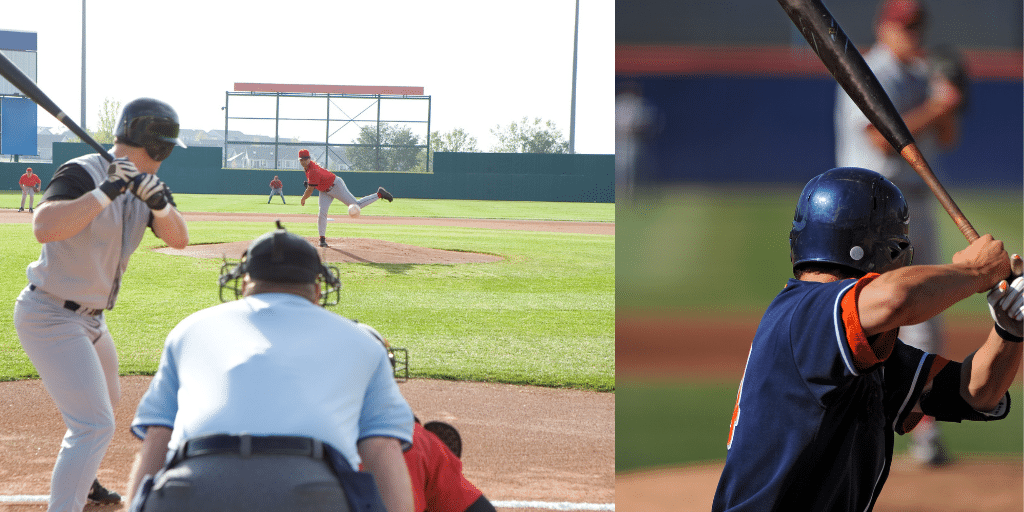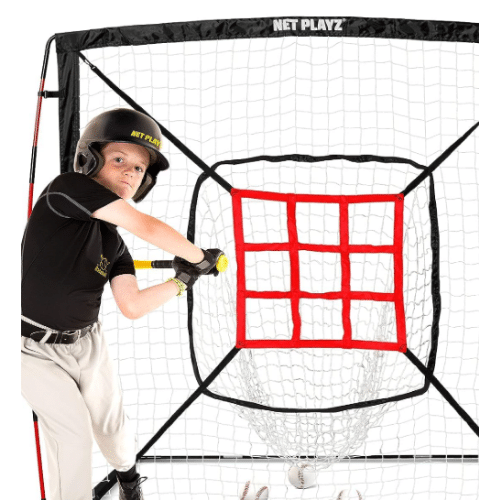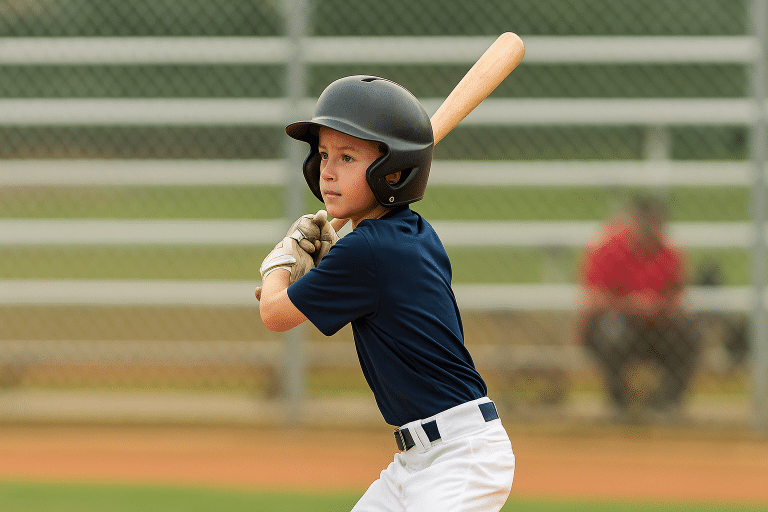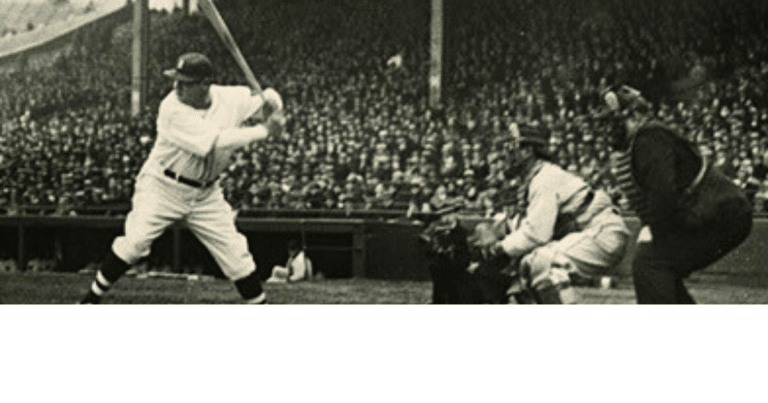The Best Way to Teach Kids Plate Discipline—Without Killing the Fun
“But Coach, That Looked Like a Strike!”
Laying off a pitch was one of my biggest challenges in youth baseball.
Every time I stepped into the box, I was ready to swing at the first thing that came my way.
Sometimes that worked. Sometimes… not so much.
No matter how many times my coach told me, “Don’t be afraid to take a pitch,” I still worried the one I took might be the only hittable pitch I’d see.
So there’s that.
Teaching plate discipline to young players can feel like trying to teach a golden retriever not to chase a tennis ball.
Instinct takes over.
But here’s the thing: plate discipline is one of the most valuable—and overlooked—skills a young hitter can learn.
Done right, it builds patience, pitch recognition, and smarter at-bats.
Done wrong, it turns practice into a boring game of “don’t swing.”
Let’s break down how to teach this essential skill… without sucking the fun out of the game.
Disclosure: This page contains affiliate links. If you make a purchase through one of these links, I may earn a commission—at no extra cost to you. As an Amazon Associate, I earn from qualifying purchases.

Why Kids Struggle With Plate Discipline
Youth players are wired to swing.
They’ve got energy, nerves, and a cheering crowd (even if it’s just a few folding chairs and one overly enthusiastic uncle).
The moment the pitcher releases the ball, instincts kick in—see ball, hit ball.
The idea of not swinging feels like doing nothing.
And for a 10-year-old? That’s basically the worst.
That mindset leads to a lot of wild hacks at pitches in the dirt.
And while we’re not trying to turn Little Leaguers into on-base-percentage nerds, the goal is to build good habits early.
Plate discipline isn’t about walking more—it’s about controlling the at-bat. Picking pitches you can drive. Letting the junk go.
It’s not just a skill—it’s a mindset. And it doesn’t have to be boring.
🧠 5 Fun + Effective Tips to Teach Plate Discipline
1. Turn “Don’t Swing” Into “Hunt Your Pitch”
Telling a kid not to swing is like telling a dog not to bark at the mailman—it might happen, but not without serious effort.
So flip the mindset.
Instead of saying, “Be patient,” or “Take a pitch,” teach them to hunt the pitch they can drive.
Make it feel like they’re in control—not just standing there waiting to get rung up.
Here’s how to frame it:
“If it’s not your pitch, let it go. You’re the boss in that box.”
This gives them purpose in the pause.
Suddenly, they’re not being passive—they’re being selective.
And when they do swing, it’s with intention.
🎯 Pro Tip: Have players pick a “hunting zone” before stepping in.
Maybe it’s middle-in.
Maybe it’s belt-high. A pitch they know they can drive.
If it’s not there? Take it.
It’s a simple green light/red light system that builds confidence fast.

2. Use a “Yes-Yes-No” Mental Trigger
One of the biggest problems for young hitters?
They decide too late.
By the time they realize the pitch is outside or in the dirt, their swing is already halfway there.
Add this to the mix:
A hitter has about 0.125 seconds to decide whether or not to swing.
Not a lot of time!
That’s where the “Yes-Yes-No” approach comes in.
It works like this:
- Yes – I’m ready to swing.
- Yes – Still ready if it’s in my zone.
- No – Last split-second check… not my pitch, hold back.
This rhythm keeps them aggressive, but still disciplined in action.
💡 Coach it like this:
“Think ‘yes’ all the way—until the pitch gives you a reason to say ‘no.’”
That subtle shift trains kids to read the pitch while staying in attack mode.
They’re not guessing. They’re reacting.

3. Make “Bad Ball” Swings Part of Practice
You want kids to stop swinging at junk?
Let them feel what junk looks and feels like.
Too often, we tell young hitters “don’t chase” without ever showing them what they’re actually chasing.
So flip the script—build it into practice.
💥 Here’s how:
Have a coach or parent throw a mix of good and bad pitches—on purpose.
The goal?
Have the hitter call out “yes” or “no” as the pitch is on the way, without swinging.
After a few rounds, switch it up and let them swing—but only at “yes” pitches.
If they swing at a ball, stop and ask:
“Was that in your zone? Could you have driven that? Or did you just get antsy?”
This turns discipline into a game—not a punishment.
And it sharpens pitch recognition, which is half the battle.
🎯 Bonus Drill:
Put colored tape or dots on balls.
Red = take. Blue = swing. Toss mixed pitches.
Instant feedback. Instant focus.

4. Build a Pre-At-Bat Plan
Any success at the plate starts with a plan and a purpose.
But what does that actually mean?
Before each at-bat, have your hitter ask:
- ❓ Who is the pitcher?
- ❓ What pitch am I hunting?
- ❓ Where do I drive the ball best?
Even something simple like “I’m looking for belt-high fastballs” helps narrow their focus and boost confidence.
🧠 Coach it like this:
“Have a plan when you step in. Know what you want—and don’t settle.”
When kids learn to anticipate instead of react, you’ll see fewer ugly hacks and way more quality at-bats.
🧢 Bonus Move:
Give each player a simple “hitter’s checklist” to run through mentally in the on-deck circle. Make it a routine.
It’s a great way to turn plate discipline into a habit—not just a hope.

5. Praise the Take, Not Just the Hit
Let’s be honest—most of the time, the dugout only erupts after a big hit.
But what about that moment your 9-year-old watches a nasty curveball dive low and outside… and doesn’t swing?
That deserves a fist bump, too.
If we only celebrate contact, kids start thinking the only “good” at-bats are the ones that end with the ball in play. That’s a fast track to swing-happy habits.
⚾ Flip the focus:
Start recognizing smart takes.
Make a big deal when a player lays off a borderline pitch or shrugs off a junk ball on a full count.
Let them know that discipline is part of the win.
It builds confidence.
It teaches trust in the process.
And it helps kids see that swinging isn’t the only path to success.

🧰 Gear and Tools That Can Help
Reinforcing plate discipline doesn’t have to mean long lectures or dull drills. The right tools can turn pitch selection into a fun, visual experience:
✅ Strike Zone Targets: Velcro or foam zones help kids see where they should be swinging—and where they shouldn’t.
✅ Smart Tees: Adjustable tees like the Tanner Heavy let you work on different pitch locations and reinforce the idea of waiting for the right one.
✅ Batting Nets with Target Boxes: Set up colored target zones and turn hitting into a game of aim and swing. Great for solo practice or backyard reps.
These simple tools can make a huge difference in how kids understand their zone.


Frequently Asked Questions
My kid swings at everything. Should I make them stop swinging altogether?
No way. Don’t punish the instinct—build awareness first.
Use drills that help them recognize what they’re swinging at.
The goal is to coach control, not fear.
Is it too early to teach pitch recognition to 8-year-olds?
Not at all! Just keep it visual and low-pressure.
Use color-coded zones, foam balls, or soft toss games to introduce the concept in a way that feels like play.
How do I keep this fun during team practices?
Turn it into a game! Use points, walk-up music, or even silly nicknames for zones (“The Danger Zone,” anyone?).
Kids love challenges—especially when they feel achievable.
What if my kid gets frustrated when they take a strike?
Totally normal. Just reframe it as a learning moment, not a mistake.
Remind them: even MLB hitters take strikes while waiting for the pitch they want.
The goal isn’t to swing at every strike—it’s to swing at the right one.
How long should plate discipline drills last in a typical practice?
Keep it short and sharp—10 to 15 minutes is plenty.
The key is repetition over time.
Sprinkle it into every practice instead of overloading a single session.
My kid’s coach tells them to “always be aggressive.” Is that wrong?
Not necessarily. Aggression isn’t bad—it just needs to be smart.
Teach your hitter when to attack (on their pitch) and when to let it go.
That’s how confidence grows at the plate.
The Best Way to Teach Kids Plate Discipline—Without Killing the Fun
🙌 Final Thoughts + Call to Action
“A Walk Is as Good as a Hit”
Teaching kids to wait for their pitch takes time—but it pays off in a big way.
You’re not just coaching better hitters. You’re developing smarter ballplayers who play with purpose.
And the best part?
You don’t have to turn the joy of hitting into a science lab.
With a few fun drills, a bit of patience, and some creative incentives, your kid can learn plate discipline without ever losing their love for the game.
Plate discipline isn’t about taking the bat out of a kid’s hands.
It’s about putting better swings into them.
With a little strategy and encouragement, you can help your player grow into a hitter who sees the ball, knows the zone, and waits for their moment.
👉 For more field-tested tips on raising confident ballplayers, check out our other youth coaching blogs—or sign up for our weekly newsletter, High N Tight .
Let’s build smarter hitters, one swing at a time.





